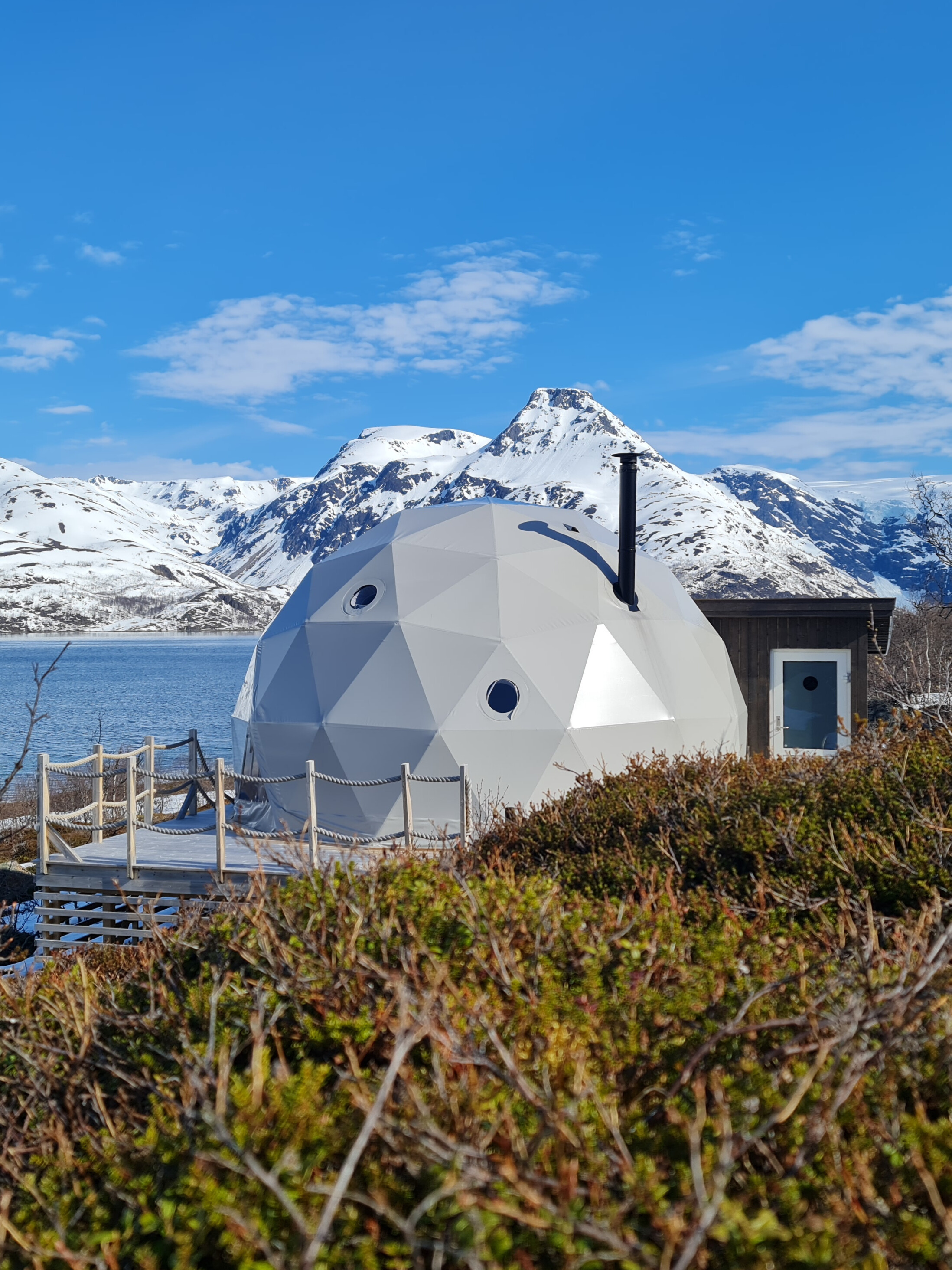The Seasons
Each Season holds its own Magic
At Isbreen Glacier, far above the Arctic Circle, the seasons flow seamlessly into one another, unlike the more defined seasonal shifts in the rest of Europe. From mid-August to early April, the long nights are illuminated by the mesmerizing Northern Lights, with winter casting the landscape into deep darkness from November to January. Although temperatures are generally moderate, the wind chill can make conditions feel far colder, as the Arctic winds often add a sharp edge to the air. In contrast, summer from May to August brings a seemingly endless golden-hour light under the Midnight Sun, creating an ethereal cycle of extended light and darkness.
Winter (December - February)
- Temperature: Ranges from -2 to -15°C (28 to 5°F).
- Weather: Predominantly snowy with frequent clear skies and windy conditions.
- Daylight: Minimal daylight, from 0-3 hours in December up to 4-8 hours in February. The sun is absent in December, returns in late January, and gradually increases through February.
- Northern Lights: Frequently visible.
- Landscape: Snow-covered with icy patches and a distinctly wintry atmosphere.
Spring (March - May)
- Temperature: Ranges from -5 to 15°C (23 to 59°F), warming steadily.
- Weather: Mostly snow and clear skies early in spring, shifting to more rain and sunshine by May.
- Daylight: Rapid increase from 8-14 hours in March to nearly 24 hours by May, with the sun consistently present.
- Northern Lights: Visible in March (especially around the equinox) and first week of April, then absent.
- Landscape: Snow-covered in early spring, with lower elevations turning green by May.
Summer (June - August)
- Temperature: Warm, ranging from 5 to 30°C (41 to 86°F).
- Weather: Mostly sunny, with occasional rain and wind.
- Daylight: Continuous daylight in June and July (24 hours), slightly decreasing in August (18-24 hours), with the midnight sun.
- Northern Lights: Not visible, except potentially in the last week of August.
- Landscape: Lush, green landscapes; snow-capped mountains as higher elevations retain snow in August.
Autumn (September - November)
- Temperature: Cooling from 15°C (59°F) in September to -10°C (14°F) by November.
- Weather: Mixed storms, sun, rain, and snow, transitioning to more frequent snow by November.
- Daylight: Rapidly decreasing from 8-18 hours in September to just 3-4 hours by November. The sun is present until late November, then disappears.
- Northern Lights: Visible, with high activity around the September equinox.
- Landscape: Begins with autumn colors, then transitions to icy terrain, and becomes snow-covered by mid/end November.



